Sony has just released the LinkBuds S, an all-new version of their innovatively designed LinkBuds open earbuds, but with a completely different look and plenty more functionality.
These buds come with active noise cancellation (ANC) and several of Sony’s proprietary technologies, including 360 Reality Audio, Digital Sound Enhancement Engine (DSEE) Extreme, LDAC, and Headphones Connect app support. A few experimental features, stronger mics, and more third-party app support also come part of the package.
Sony LinkBuds S SPECS
Price: $199
Colors: Black, White
Battery life (rated): 6 hours (ANC on); 9 hours (ANC off); 20 hours (with charging case)
Connectivity: Bluetooth 5.2
Water resistance: Yes (IPX5 rated)
Size: 1.69 x 2.36 x 1.09 inches (charging case)
Weight: 0.17 ounces (per bud); 1.23 ounces (charging case)
The redesign is a huge departure from the LinkBuds’s open-ring design, and the charging case’s low battery life won’t please everyone. Despite these shortcomings, the LinkBuds S stands out as one of the best noise-cancelling earbuds available.
Sony Linkbuds S review: Availability and price
The Sony LinkBuds S can be purchased for $199 at major online retailers (e.g., Amazon (opens in new tab), Best Buy (opens in new tab)) or directly from Sony. Two colors are sold: Black and White. Inside the box are a charging case, USB-C charging cable, four sets of different sized tips, an instruction manual, a warranty, and a free trial to Sony’s 360 Reality Audio platform.
These buds are more affordable than high-end models like the AirPods Pro ($249), Sennheiser Momentum True Wireless 3 ($249), and Sony’s flagship entry, the WF-1000XM4 ($279). They also come in at a higher price point than the original LinkBuds ($179) and other mid-range gems like the Anker Soundcore Liberty Air 2 Pro ($99).
Be sure to bookmark our headphone deals page for the latest sales.
Sony Linkbuds S review: Design and comfort
Sony went with a more conventional form factor this time around. The LinkBuds S is compact and lightweight with a small oval body and in-ear fitting. Details are limited to just an embossed logo and mic grille on the front. The bold colorways scream minimalist. An IPX4 rating protects the buds from the sweat and splashing water.
The charging case is also standard compared to other brand releases. Sony gave it a textured matte finish that feels a bit rough, and the embossed logo on top is barely recognizable from a few feet away. On the plus side, it is small, comes with a striking LED on the front, and has a strong magnet that shuts the lid tightly.
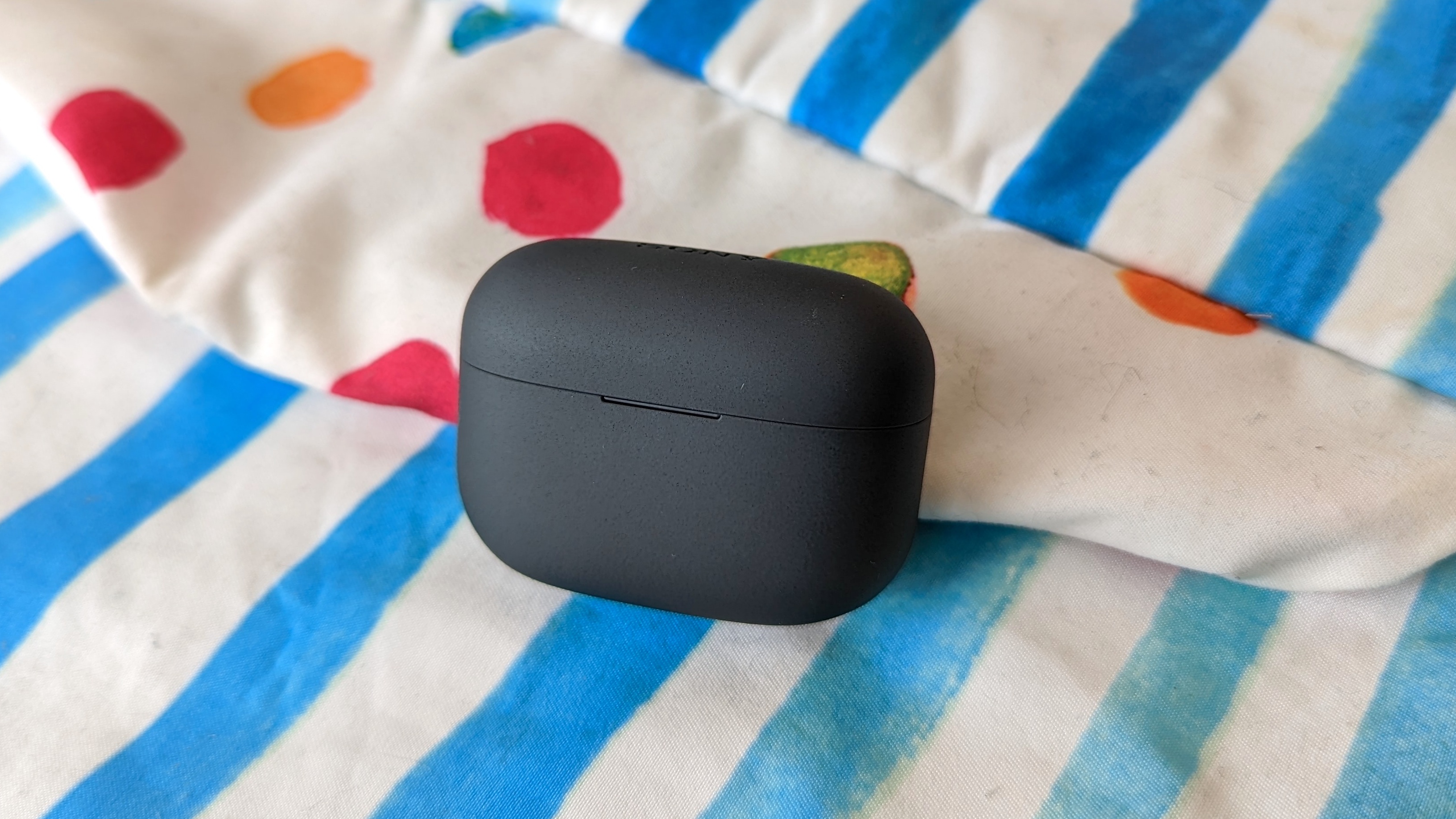
Comfort and fit are satisfying. Each bud rests pleasantly on the concha and the angled sound port slides easily into the canal. Wearing the LinkBuds S for several hours throughout the day felt relaxing.
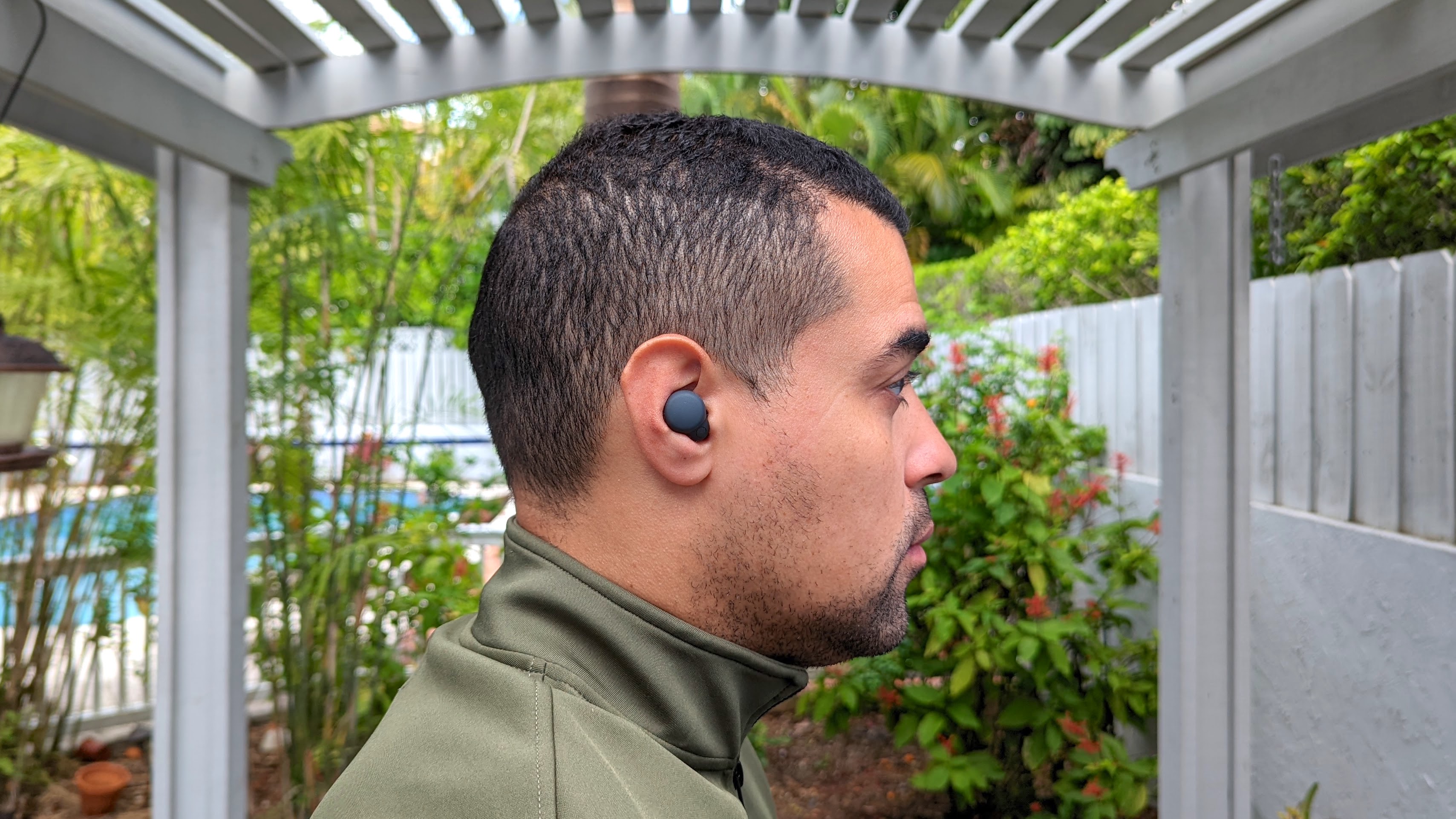
Sony’s tips come with tight grip control and lock the buds in place when jogging. Keep in mind that they aren’t designed for exercising, but the IPX4 certification and on-ear stability justify use for light workouts. There’s even an ear tip fit test that measures air tightness to optimize fit and noise cancellation, though the results are questionable at times.
Sony Linkbuds S review: Controls and digital assistant
Sony gives you a full suite of media controls that can be assigned in the companion app, as well as several ways to activate them. The responsive touch controls accept single-/double-/triple-tap and long hold gestures. Motion detection accurately enables auto-pause every time you take off the earbuds.
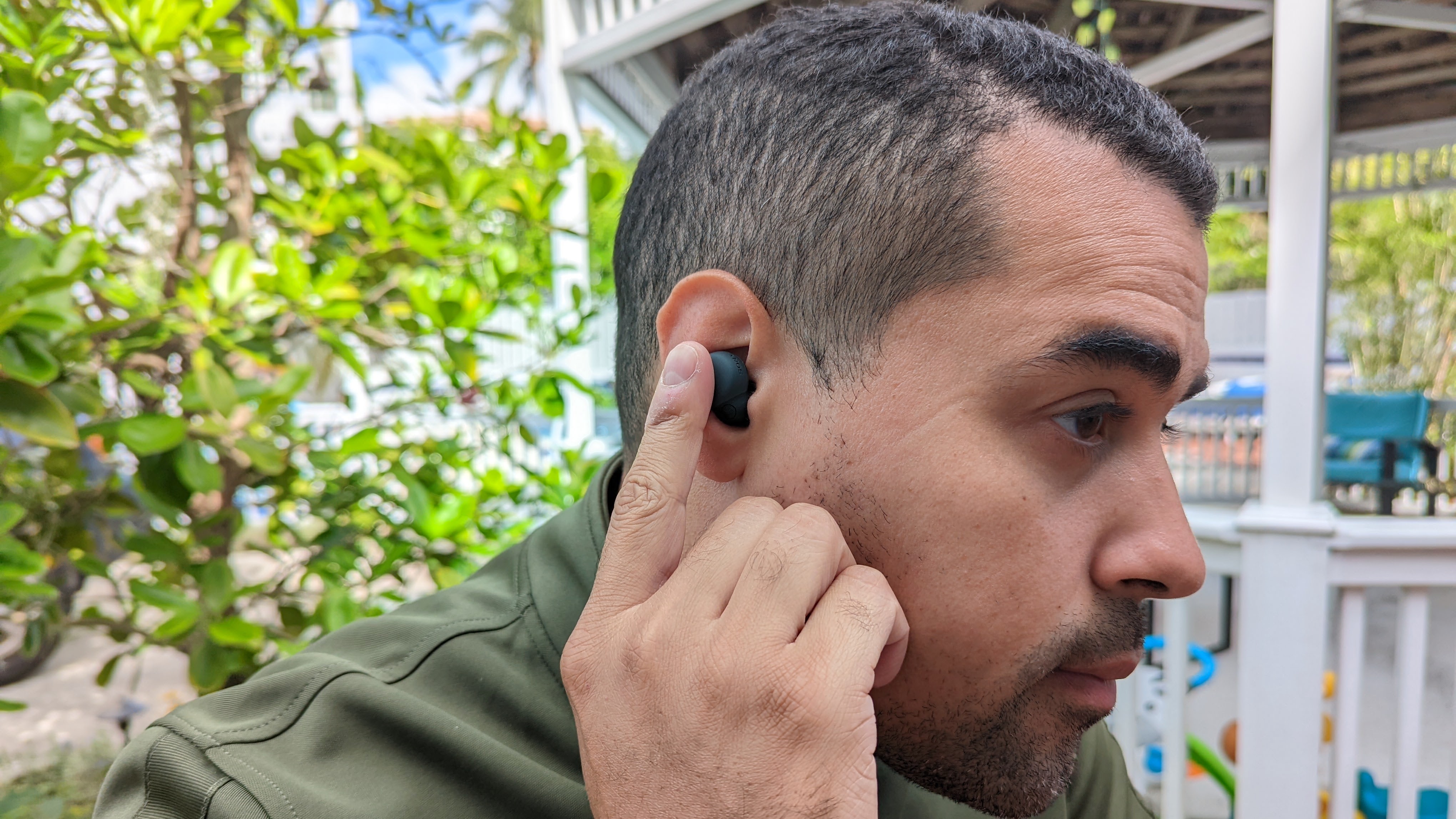
Smart features like Quick Attention lower volume down to 10% and Speak-to-Chat automatically pauses music when you speak; both are intuitive and perform well.
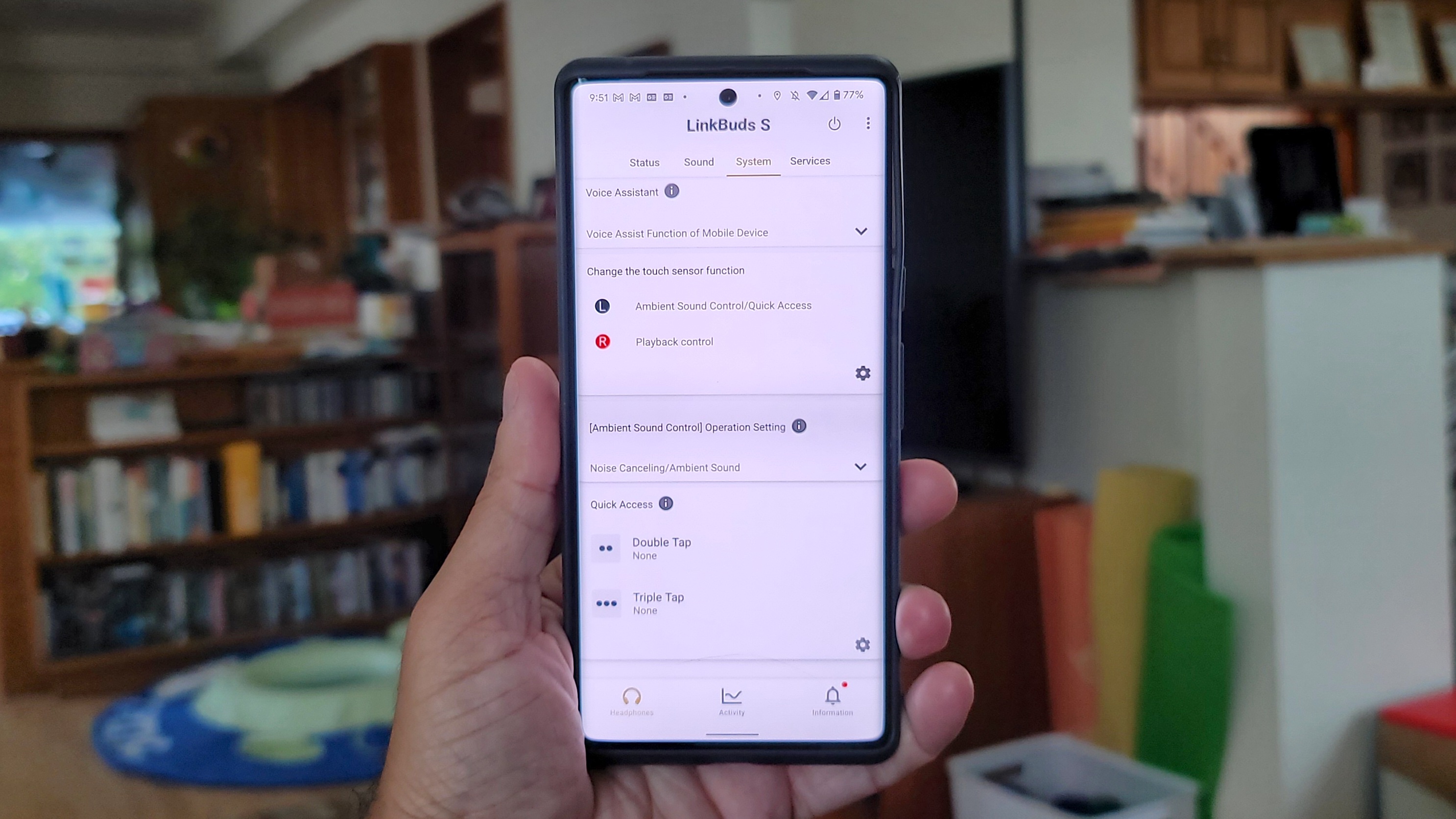
Voice command enthusiasts will be excited to hear that the LinkBuds S comes with Alexa and Google Assistant integration. What that means is you can enable either AI bot by speaking out their respective wake word phrase (“Alexa” or “Hey Google”). Siri and Bixby are also compatible, but they must be activated manually; Google Assistant can also be turned on the same way. Sony’s intelligible mic array and PVP (Precise Voice Pickup) Technology are a killer combination that demonstrates great speech recognition. Every command I spoke was answered quickly and correctly.
Sony Linkbuds S review: Audio quality
Audio quality on the original LinkBuds was noteworthy, but the open design didn’t allow for listeners to hear music fully and uninterrupted. The LinkBuds S fixes this problem and produces well-balanced sound, along with strong bass response.
Sony created an all-new 5mm driver with high-compliance diaphragm to pair with their acclaimed V1 processor. Together they give music more depth and vibrance, while reducing distortion on boom-heavy tracks.
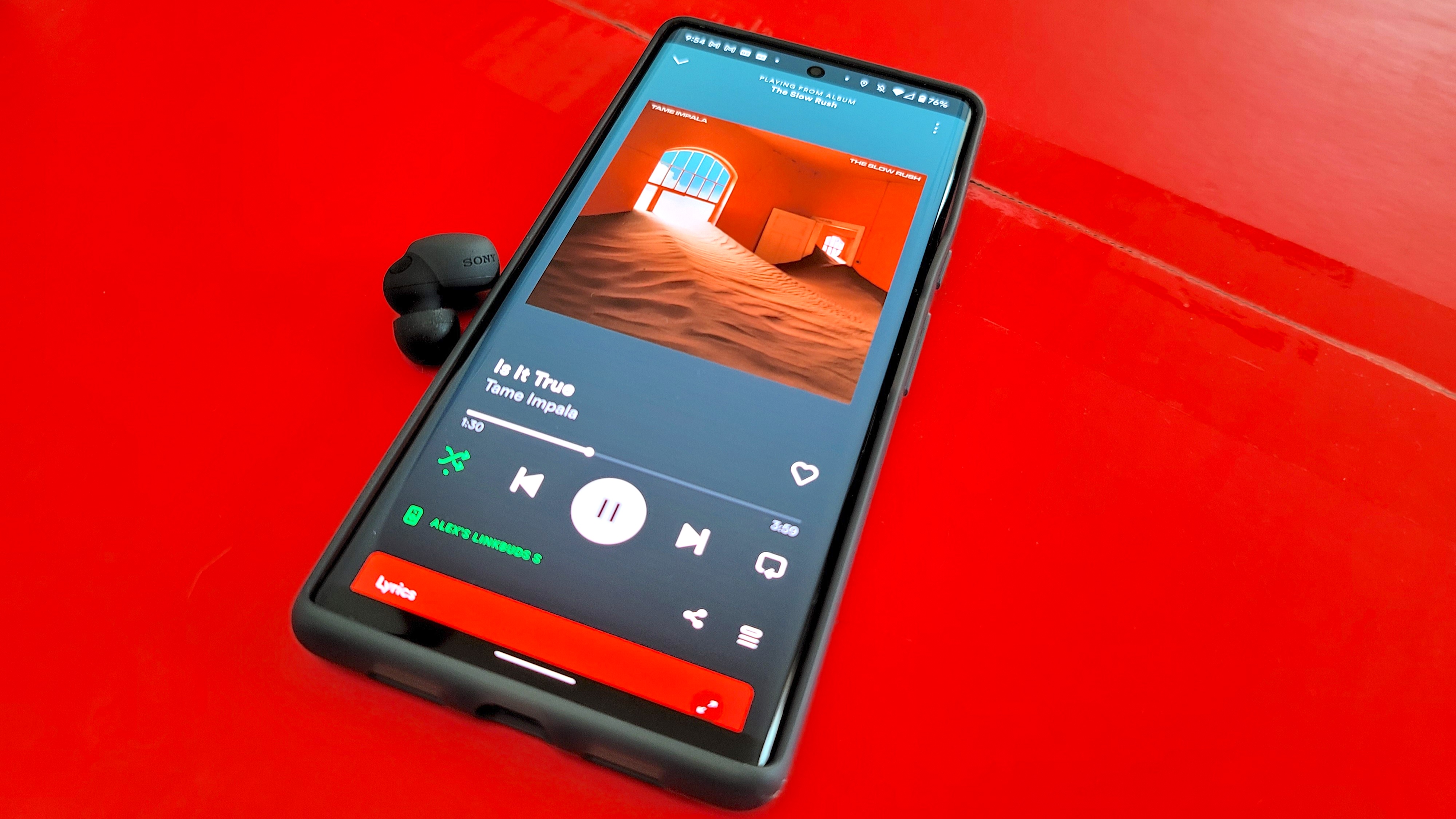
Psychedelic rock tracks like Tame Impala’s “Is It True” were reproduced better than I expected. Much of the fuzz present in the funky bassline and synths were cleaned up, which made the low end tighter and more pleasing. The lo-fi vocals also sounded sharp. This level of performance carried over to Miguel’s “Told You So,” where the synth bass and stabbing electric guitars were layered nicely, leaving room for the singer’s soulful lyrics to ride over the smooth beat.
Turning on DSEE Extreme upscaled the fidelity lost on digitally compressed files. I pulled up some old downloads from my Apple Music collection and noticed crisper presentation on many lo-fi recordings. Sony’s LDAC Hi-Res Bluetooth codec also boosted sound quality when streaming and made subtle nuances in complex recordings discernable. Play a record like The Police’s “Roxanne” and you’ll hear the atonal piano chord pressed by accident around the 3-second mark, along with Sting’s laughter shortly after.
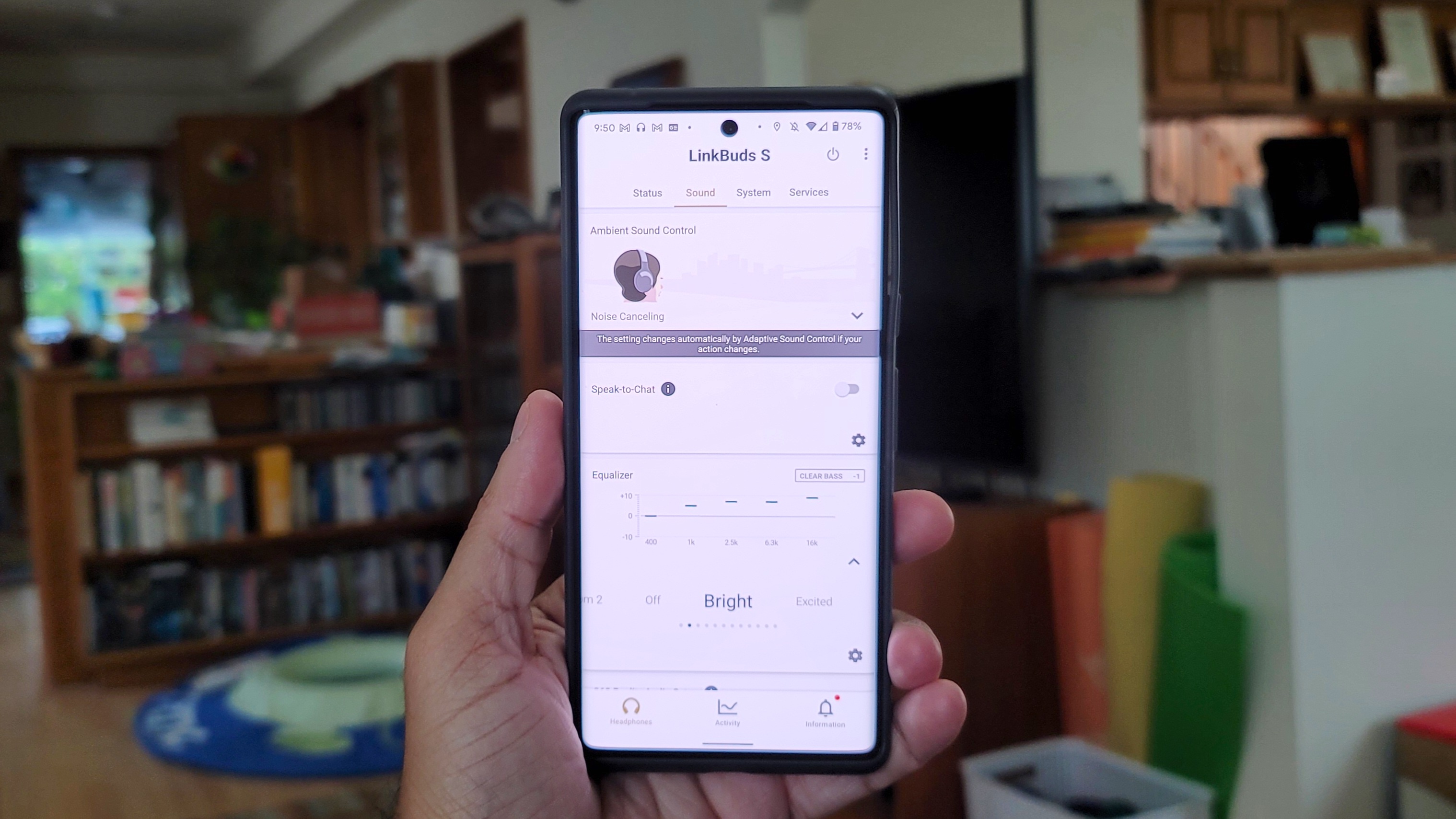
360 Reality Audio brings spatial audio to the LinkBuds S. The platform performed better on Sony’s other high-end models, though there were some tracks where the 3D effects sounded convincing.
Sony Linkbuds S review: Active noise cancellation
Noise neutralization is very impressive. Sony’s QN1e chip might be absent (the same chip used in the WF-1000XM4), but the V1 chip picks up much of the slack. Just don’t expect it to outperform category favorites like the AirPods Pro, Bose QuietComfort Earbuds or even the WF-1000XM4.
I enjoyed Spotify playlists and YouTube videos uninterrupted in multiple settings. Low and mid-frequency sounds were silenced. Any conversations that took place around me drew zero attention. The same can be said about car engine noises and the tumbling sounds that came from our laundry room.
However, louder, high-pitched sounds crept into the soundscape. My toddler’s motorized toys weren’t distracting, but his cries and the electronic noises coming from his electronic boombox were. Occasionally, I heard some bird chirping when walking around the backyard. Ambulance sirens and whistles were audible too.

Sony engineered these buds with adaptive ANC. The technology learns from your behavior and what environments you frequent and adjusts performance to minimize background interference. You can also play with the settings in the Adaptive Sound Control menu and set how you want ANC to perform in different scenarios (e.g., running, traveling).
Wind resistance is arguably the unsung feature of the LinkBuds S. When wearing the buds outside during a thunderstorm, the rough winds barely made their presence felt on music tracks, and whooshing effects were reduced at an extremely high level.
Ambient Sound works well. There are still 20 levels of ambient attenuation to adjust the amount of noise you want to let in. I could hear cars coming from up the block, dogs barking, and my toddler crying from his crib via monitor. Conversations didn’t come through as clearly as I would have liked, even with the Focus on Voice setting enabled.
Sony Linkbuds S review: App and special features
Extended functionality runs through the Sony Headphones Connect app. The majority have already been discussed in detail, including 360 Reality Audio, ANC/Ambient Sound, control customization, DSEE Extreme, Equalizer, LDAC, Speak-to-Chat, Spotify Tap, and the ear tip fit test.
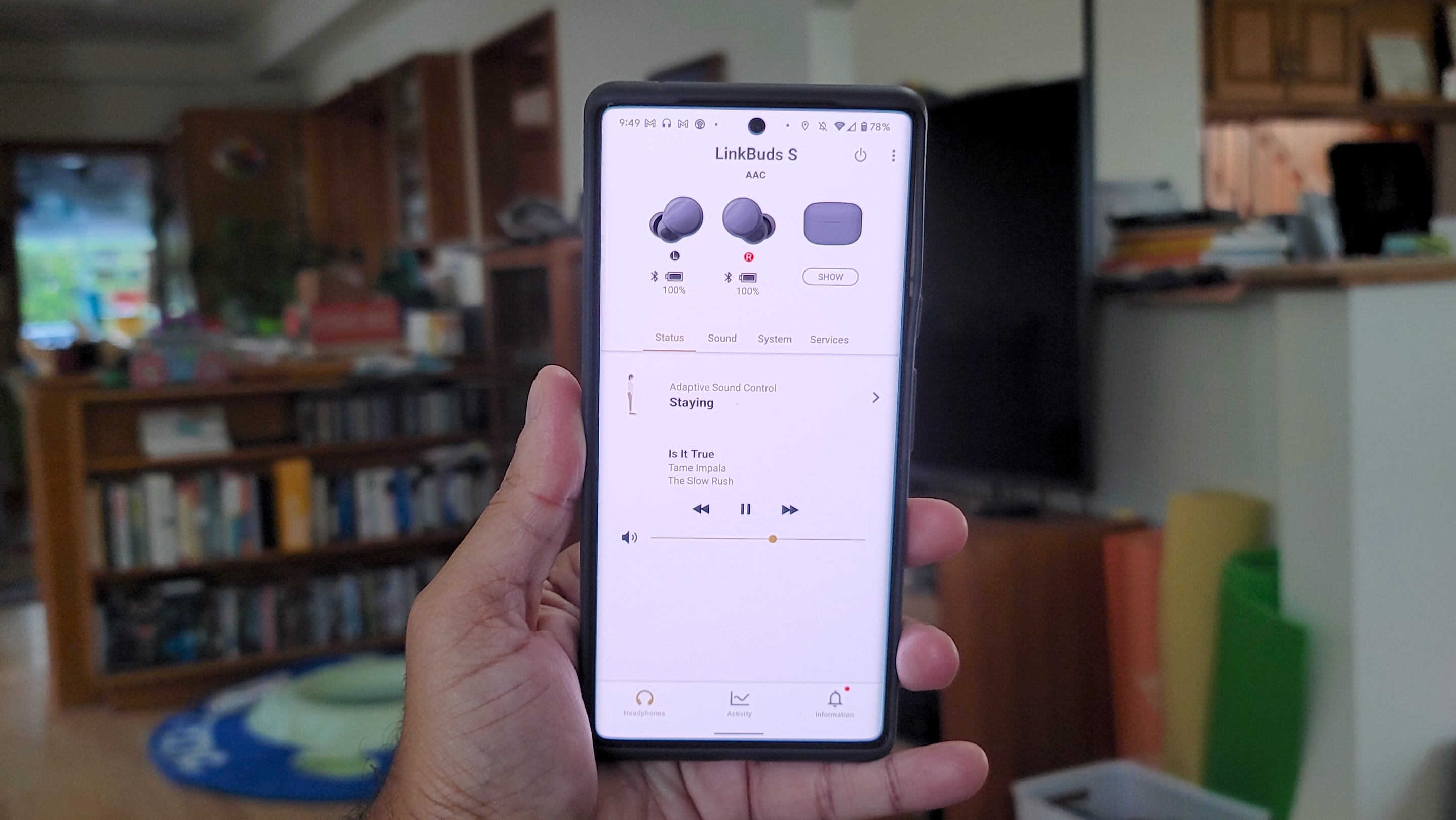
Sony added three experimental features: Auto Play, Endel Quick Access, and Service Link. Auto Play is a separate app that’s essentially a tool for automatically playing or resuming audio based on your activity. You can set actions like have the buds play a specific playlist when walking or after a call. There’s also an option to adjust the frequency of app notifications every hour and set time announcements.
Endel is another app that works hand in hand with Headphones Connect and Auto Play. It’s a fee-based soundscape service, but first-time users can receive a free trial. Unless you’re interested in creating your own personalized soundscapes to mask ambient noise, the feature doesn’t serve much purpose.
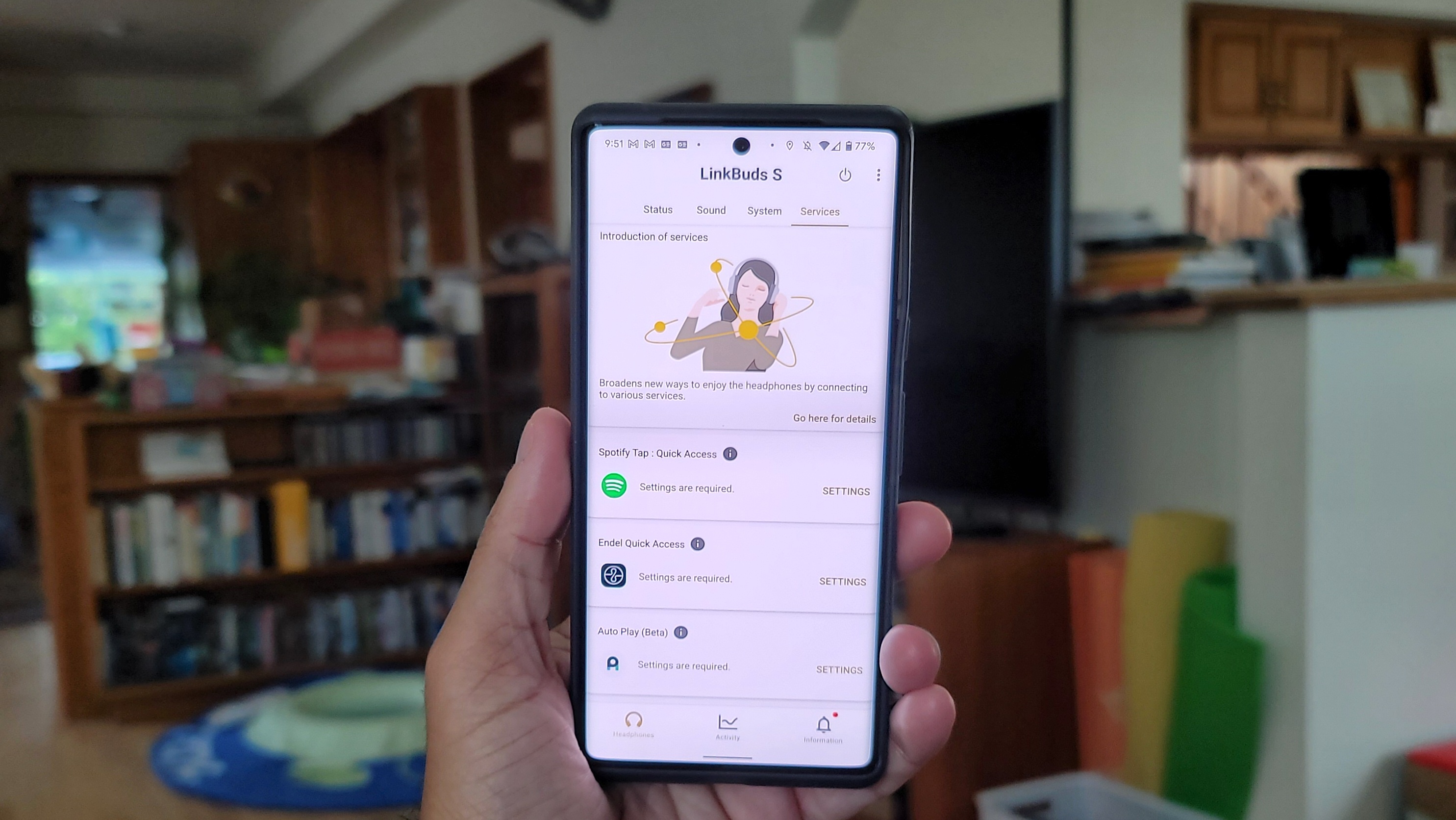
Service Link is just a toggle control to access the other two features.
There is one hidden feature that can be enabled outside of the app: a homescreen widget to switch the EQ, monitor battery levels, or jump into Headphones Connect. Rounding out the app are a music player, automatic power off, firmware updates, Spotify Tap, visual guides, and the ability to prioritize sound quality or connectivity.
Sony Linkbuds S review: Battery life and charging case
Sony rates battery life at 6 hours with ANC on and 9 hours with ANC off. My testing showed these playtimes were off by about 45 minutes. You’re getting higher ANC playtime than the AirPods Pro (4.5 hours), but the buds also fall short of category leaders like the WF-1000XM4 (8 hours) and Master & Dynamic MW08 Sport (10 hours).
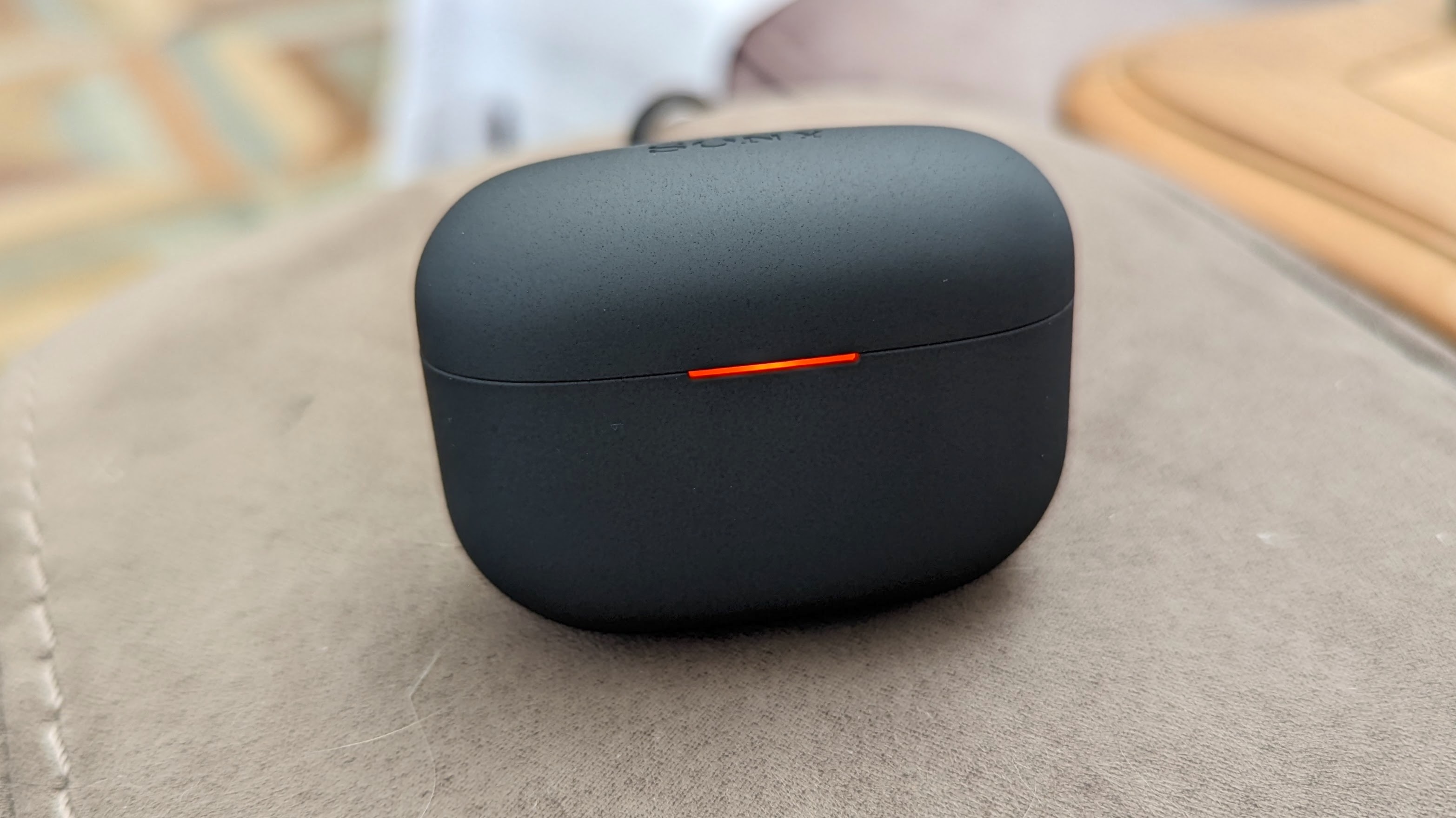
The charging case offers little portable power: 20 hours. That is less than the industry standard set by the AirPods Pro case (24 hours). A 5-minute charge gets you 1 hour of use. Wireless charging is not supported.
Sony Linkbuds S review: Call quality and connectivity
The LinkBuds S is a surprisingly good calling headset. Sony’s mics pick up vocals clearly in most environments. Wind resistance is also strong, so you can communicate better in gusty conditions, granted wind drops clarity a smidge.

Bluetooth 5.2 operates quickly and reliably. Pairing is instantaneous, especially on Android devices, thanks to one-tap Google Fast Pair. Range extends up to 40 feet in open spaces, which is several feet more than what Sony advertises (32 feet) and just enough length to jump from room to room without any dropout. Speaking of which, AAC and SBC codecs operate smoothly when indulging in Apple Music and Spotify. LDAC delivers fast transfer rates, but there are times when it can affect connection stability.
Multipoint technology (pair to two devices simultaneously) and NFC did not make the cut.
Sony Linkbuds S review: Verdict
Sony went back to basics with the LinkBuds S, focusing strictly on ANC and audio performance versus an ultramodern design and gimmicky ambient sound presentation. It’s a fantastic, and less expensive, alternative to the WF-1000XM4. More importantly, it retains many brand hallmarks, while also introducing new features and improving weaknesses on past Sony models such as call quality.
The redesign won’t win over fashion-forward music lovers or brand enthusiasts. Neither will the charging case’s low battery or lack of NFC. However, these are trivial complaints when factoring in the premium performance you get for the price.








